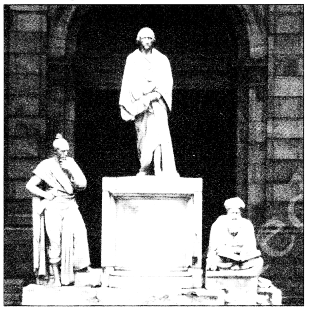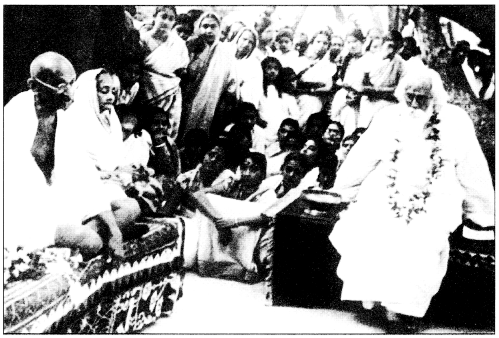How, When and Where Class 8 Extra Questions and Answers Social Science History Chapter 1 CBSE Pdf free download are part of Extra Questions for Class 8 Social Science. Here we have given NCERT Extra Questions for Class 8 Social Science SST History Chapter 1 How, When and Where.
You can also practice NCERT Solutions for Class 8 History Chapter 1 Questions and Answers on LearnInsta.com.
How, When and Where Class 8 Extra Questions and Answers Social Science History Chapter 1
How, When and Where Class 8 Extra Questions Very Short Answer Type
Question 1.
Whom did Robert Clive ask to produce the maps of Hindustan?
Answer:
Rennel was asked to produce the maps of Hindustan by Robert Clive.
Question 2.
Who was given the title of ‘Duke of Connaught’?
Answer:
Third son of Queen Victoria – Prince Arthur was given the title.
Question 3.
Who was the Ist Governor-General of the British in India?
Answer:
Warren Hastings was the Ist Governor-General of the British in India.
Question 4.
What was the name of the three-volume work published by James Mill?
Answer:
The name of the three-volume work published by James Mill was ‘A History of British India’.
Question 5.
What does the Census operations consist of?
Answer:
Census operation consists of the detailed records of the number of people in all provinces in India, information on castes, religions and occupations of the people at that time.
Question 6.
What is history?
Answer:
History is about finding of things that were in the past and it also narrates how the things have changed.
Question 7.
What was felt by Mill about the caste and religion?
Answer:
About the in Indian caste and religious system Mill was felt there was religious intolerance, caste taboos and superstitious belief.
Question 8.
What are the forces of modernity?
Answer:
Science, reason, democracy, liberty and equality.
Question 9.
What all were absent under British rule.
Answer:
Equality, freedom and liberty were absent under British rule.
Question 10.
In which century did the printing got spread?
Answer:
By the middle of 19th century.
Question 11.
Which practice became important under colonial administration?
Answer:
The Practice of Surveying.
How, When and Where Class 8 Extra Questions Short Answer Type
Question 1.
Moving away from the British classification, how did historians usually divide the history of India?
Answer:
When we move away from the British classification, historians usually divided the Indian history into three categories that are:
- Ancient
- Medieval
- Modern
Question 2.
What were the sources used by historians in writing the History at the time of the British rule?
Answer:
The historians used the following sources in writing the history:
- The official records of the British administration.
- The letters and documents that were preserved carefully.
- Records being preserved from the administration offices.
- Letters and memory that were kept in the archives.
Question 3.
Why can’t we get to know easily and accurately about history of people who were not literate?
Answer:
Sources that were produced by those who were literate have no experience of what the tribals, peasants, the workers of mines or the poors on street liked, so we cannot get to know easily and accurately about the history of people who were not literate at the time.
Question 4.
What is Modernity and its forces?
Answer:
Modern period in west was related to the growth of the modernity and it focuses are science, reason, democracy, liberty and equality.
How, When and Where Class 8 Extra Questions Long Answer Type
Question 1.
Why are Dates important in History? And what was there in history written by the British Historians?
Answer:
In History, the dates are really important because the dates focuses on a particular set of events and changes that took place during a particular period of time.
The History that was written by the British historians in India had considered the rule of Ist Governor-General, Warren Hastings which extended till last Viceroy, Lord Mountbatten. In brief, we can say that the British historians wrote only those points which were important to them and have only glorified their deeds and events in their historical accounts.
Question 2.
Who was James Mill, and how did he divide the History India? In what sense did he take Asian Society and Indian society?
Answer:
James Mill was a Scottish economist and a political philosopher, who had published a massive three-volume work i.e. “A History of British India. James Mill divided the history of India in three periods – Hindus, Muslims and British. Mill thought that the Asian Society was at a lower level of civilization than that of Europe. According to him before the rule of the British, the Indian Society was ruled by Hindu and Muslim despots and religious intolerance, caste taboos and superstition were spread.
Question 3.
What is the problem behind the classification of History into Ancient, Medieval and Modem?
Answer:
The problem behind the classification is that the periodization has been borrowed from the west where the Modern Period was associated with the growth of all the forces of modernity – science, reason, democracy, liberty and equality. Medieval was used to define society where there was absence of modern forces. So this was unacceptable as British rule was the period in which all liberty, equality, freedom were taken from Indians.
Picture Based Questions Class 8 History Chapter 1 How, When and Where
Look at the picture given below and answer the following questions:

Question:
1. What does the picture describes?
2. When was the building made?
3. How is it related to British Rule.
Answer:
1. The picture is a building called ‘National Archives in India’.
2. The Building was made in 1920’s.
3. The Building reflects the importance of this institution in relation to British.



